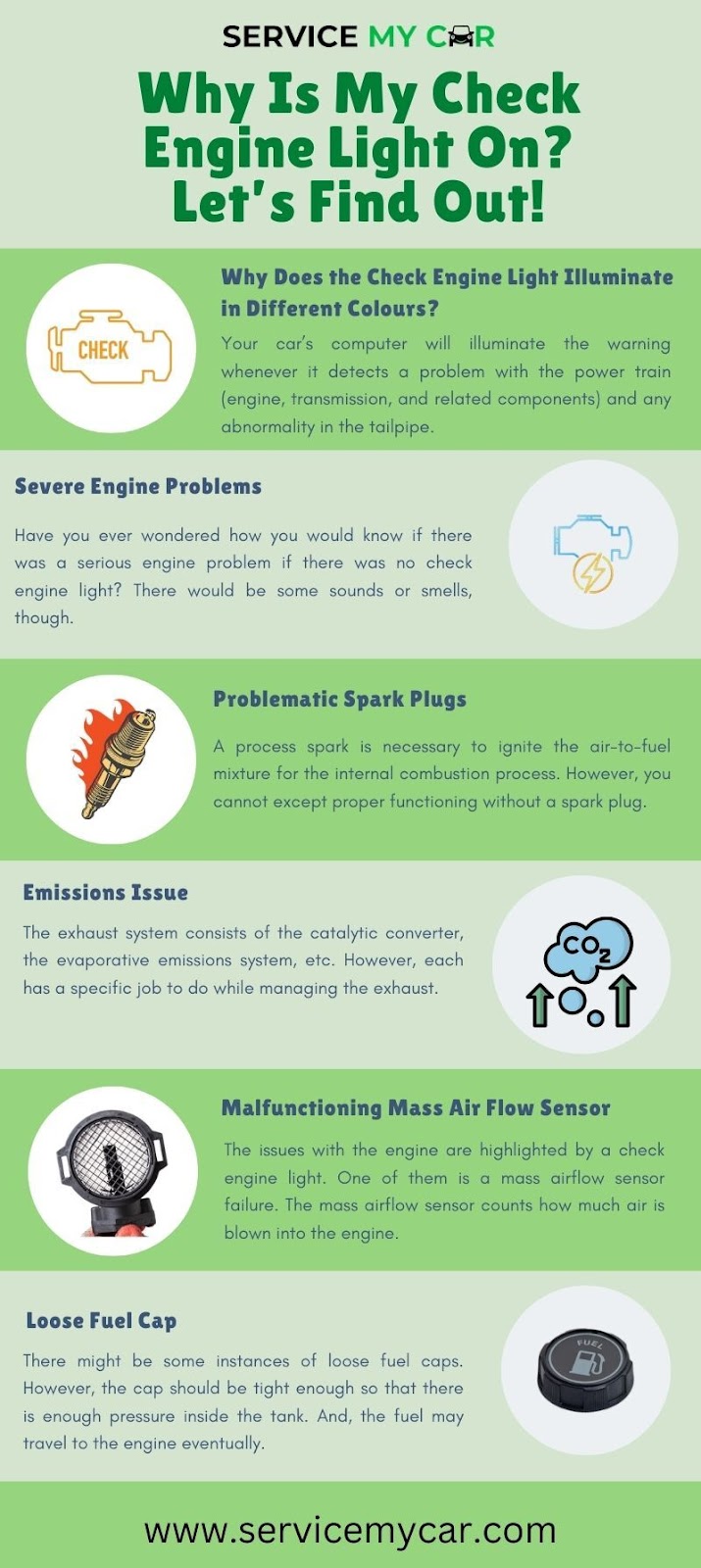
Modern vehicles are equipped with highly advanced technology. One such technology includes warning lights. There are a number of warning lights for a variety of purpose. They ultimately offer great information and save us a lot of money, especially on expensive repair costs. If you disregard those warnings, you might end up damaging costly components.
A fuel warning light intimate you about the current status of fuel, the temperature gauge highlights current engine temperature and list goes on.
However, there is a check engine light that highlights many severe issues for most critical part of a vehicle. But, there is something to understand about this warning light.
Why Does The Check Engine Light Illuminate In Different Colours?

There are countless reasons behind an illuminating check engine light. Your vehicle’s on-board diagnostic system heavily relies on check engine warning light. Your car’s computer will illuminate the warning whenever it detects a problem with the power train (engine, transmission, and related components) and any abnormality in the tailpipe.
However, a check engine light appears in many forms and colours. This might be some questions in your mind. A check engine light might appear as static or flickering. Besides, some car models prefer to have multiple colours, such as yellow, orange, and red.
While these different types of colours hint at different level of severity of the issue. If a car relies in static or flickering light, former hints at an issue that need urgent attention while later tells about a serious problem that requires your immediate attention.
Despite the check engine light's appearance, a flashing light indicates an urgent problem that must be fixed immediately. If there is any ignorance, you will end up having to pay for high repair costs.
Let’s have a look at the issues that cause the check engine light to go on.
Severe Engine Problems

Have you ever wondered how you would know if there was a serious engine problem if there was no check engine light? There would be some sounds or smells, though.
A check engine light is demonstrated to be the most reliable information source. The check engine light turns on right away as soon as a car's ECM learns of an anomaly through its sensors.
The light might also come on, for instance, if there is a problem with the internal combustion engine that results in increased hydrocarbon emissions.
However, early warning might save you from a costly car engine repair.
Problematic Spark Plugs

A proper spark is necessary to ignite the air-to-fuel mixture for the internal combustion process. However, you cannot expect proper functioning without a spark plug.
The ignition coil's spark delivers itself to the spark plugs via the spark plug wires. Always, a problem causes the check engine light to illuminate.
Emissions Issue

Modern vehicles are equipped with a number of pieces of equipment so that the exhaust gases can adhere to the regulations. The exhaust system consists of the catalytic converter, the evaporative emissions system, etc. However, each has a specific job to do while managing the exhaust.
However, a check engine light highlights the issue with any of this equipment. Because any issue with tailpipe emission certainly hampers the engine's processing.
Malfunctioning Mass Air Flow Sensor

The issues with the engine are highlighted by a check engine light. One of them is a mass airflow sensor failure. The mass airflow sensor counts how much air is blown into the engine. It establishes the amount of fuel necessary to run your engine effectively. When an engine begins to malfunction, issues frequently arise.
Since many of the engine's components interact with one another, when one fails, others frequently follow suit. Therefore, if you want to determine what's wrong, you must choose engine diagnosis. In case you also want a head gasket repair for your car and worried about how much for a head gasket repair cost will be? Don’t worry Service My Car is always here to help you and let you know, just visit our website or app for more details.
Loose Fuel Cap

There might be some instances of loose fuel caps. However, the cap should be tight enough so that there is enough pressure inside the tank. And, the fuel may travel to the engine eventually.
If this cap is loose or has some cracks, there are enough chances that the check engine light illuminates to intimate about the situation.
In the event of an engine light turning on, first check the fuel cap as it may need to be tightened up. If the light turns off, there’s no need to get an expert inspection. If the light is still illuminating, it has to tell something more serious problem.
The check engine light, however, alerts you to a problem with your car's engine. The warning could be for something simple and unimportant or for something serious that could result in additional car damage.
A professional check is worth consideration to get better insight into an issue. However, you have to find someone reliable, such as Service My Car. It is a one-stop solution for all your automotive needs, and you get any car repair at a very affordable cost. Besides, you can ask for a quote for a car service on our website or app.

